Flushing the heat exchanger of a gas boiler: cleaning methods and means of removing mineral deposits
Hot water in the tap and a stable +23 °C in the house, when there is severe frost outside - isn’t it true that these benefits of civilization have already become familiar? Now answer a simple question: was the gas boiler heat exchanger flushed after the previous heating season? If your answer is “no,” you risk being left without heat in the winter.
To prevent this from happening, read our article on fighting scale and preventing the accumulation of mineral deposits. We detail proven methods for combating calcium deposits, which reduce the efficiency of the unit and increase fuel consumption. Our tips will help increase heat transfer and extend the life of the boiler.
The content of the article:
- How is scale formed and why is it dangerous?
- Soot on external surfaces
- How often should the heat exchanger be flushed?
- Methods for removing contaminants
- Chemicals for cleaning and prevention
- Design features of heat exchangers
- How to descale a plate heat exchanger
- Flushing the shell and tube heat exchanger
- Features of washing coaxial heat exchangers
- Cleaning and washing of floor-standing boilers
- Conclusions and useful video on the topic
How is scale formed and why is it dangerous?
No liquid can compare with ordinary water in terms of specific heat capacity. Depending on temperature and pressure, this indicator varies in the range from 4174 to 4220 Joules/(kg deg). Water is non-toxic, readily available and cheap, making it an almost ideal coolant.
And yet N2There is a significant drawback - in its natural state it contains salts of the alkaline earth metals Ca and Mg.When heated, they form insoluble carbonate, or, in other words, lime deposits – scale – on the internal surfaces of heat exchange equipment.
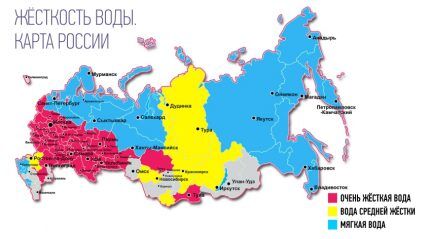
The negative consequences of scale formation are as follows:
- efficiency decreases;
- water pressure decreases;
- boiler wear accelerates;
- expenses increase.
Domestic heating boilers and water heaters are mainly equipped with surface heat exchangers, in which heat is transferred through the surfaces of metal walls. But scale has a high thermal resistance, that is, low thermal conductivity.
For this reason, the heat transfer coefficient in contaminated heat exchangers decreases, which leads to a decrease in temperature coolant in the heating circuit and insufficient heating of water at the outlet of the water heating circuit.
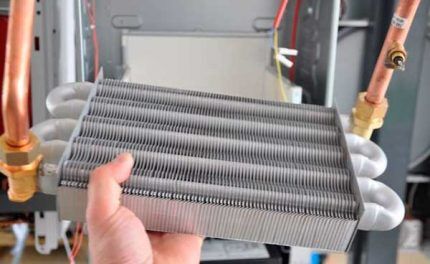
Solid deposits as thin as 0.2 mm increase fuel consumption by 3%. If the scale thickness is 1 mm, the excess gas consumption will reach 7%.
When heat transfer decreases, more gas must be used to maintain a given water temperature, which indicates a decrease in efficiency. At the same time, with an increase in fuel consumption, the volume of flue gases increases, and the emission of harmful substances increases, polluting the air around the household and the atmosphere in general.
Deposits completely or partially block the flow area of the pipe, which leads to an increase in hydraulic resistance in the system, disruption of coolant circulation, and a decrease in the supply of hot water at water intake points.
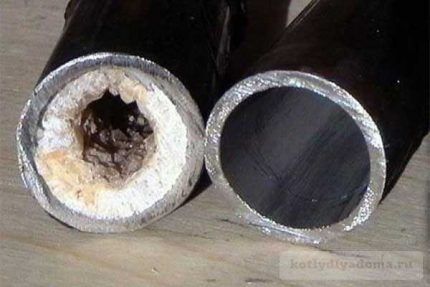
Violation of heat transfer leads to overheating of pipes, which causes the formation of microcracks - future sources of corrosion. Due to operation at extreme conditions, the unit fails prematurely.
To prevent equipment damage, scale must be removed periodically. Scheduled cleaning of heat exchangers gas wall boilers and floor units are performed within the time limits established by the manufacturer. A simple procedure helps maintain equipment energy efficiency at its original level, extends the turnaround time, and reduces the overall cost of operation.
Soot on external surfaces
When gas is incompletely burned, soot, an amorphous allotrope of carbon, deposits on the outer surfaces of the heat exchanger. The heat exchangers of boilers with an open combustion chamber and natural draft suffer more from soot.
One of the reasons for its increased formation is the dustiness of the air in the room from which the combustion air comes. A lot of dust is generated during construction work. If the construction site is located near the entrance coaxial chimney, the heat exchanger of the boiler with a closed chamber may also become dirty.
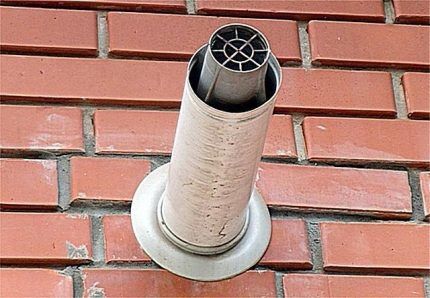
Insufficient diameter, incorrect configuration, and blockages of the chimney lead to poor draft. If the draft is poor, the removal of combustion products becomes difficult, and they settle in the form of soot on the lower outer part of the heat exchanger.
Like scale, soot has low thermal conductivity and reduces the efficiency of heat exchange equipment, leads to accelerated wear, and shortens the time between repairs. The efficiency of a heat exchanger contaminated with soot and scale can decrease by 25% or more.
How often should the heat exchanger be flushed?
The cleaning frequency is specified by the equipment manufacturer in the operating instructions. For example, heat exchangers in Neva boilers must be descaled every 12 months.
The concentration of alkaline earth salts in water can vary. If the concentration is high, the water is called hard. When using it, scale forms faster, therefore, unscheduled cleaning may be required. Also, the rate of deposit formation depends on the thermal conditions and intensity of the boiler operation.
The presence of scale in the heat exchanger pipes and soot on its fins is indicated by a decrease in the heating performance of the equipment. To determine whether the actual heating output corresponds to that stated in the documentation, measure the temperature and composition of the flue gases using a gas analyzer.
In the absence of a device, the presence of scale can be judged by indirect signs: a decrease in the temperature and pressure of water leaving the boiler. If the water heater pipeline is normal water pressure, and a thin stream flows from the tap, check for deposits on the internal surfaces of the heat exchanger tubes.
Insufficient water heating at standard gas flow and normal pressure also indicates contamination of the heat exchanger.
Note that malfunctions in the operation of complex equipment can be caused by various reasons and the presence of scale is only one of the options.
Methods for removing contaminants
To remove scale and soot, mechanical, hydraulic, chemical and other methods or combinations thereof are used.
Mechanical cleaning heat exchange equipment is carried out using a ramrod, wire brush, scraper. Both hand tools and electric or pneumatic drives are used.
Application hydraulic method This is only possible if you have a high-pressure apparatus that will supply a powerful flow of liquid capable of knocking down deposits and bringing them out.
Chemical method involves the use of special products that loosen and dissolve contaminants.

Magnetic, electromagnetic, ultrasonic methods are relatively new and involve the use of converter filters and other technical means.
To clean the heat exchangers of household water heaters and heating boilers, a combination of mechanical and chemical methods is most often used. After soaking (etching) in detergent, the remaining scale is cleaned mechanically. The modern techniques discussed above are also gaining popularity.
Chemicals for cleaning and prevention
Descaling agents contain organic or inorganic acids.In the production of household products, adipic and orthophosphoric acids are most often used. At home, prepare aqueous solutions of citric or acetic acid.
Acids are reagents - they are capable of reacting with alkaline earth salts and forming other water-soluble salts, which are then removed from the heat exchange equipment.
Alkalies are also used, for example, soda ash or caustic soda, which loosen carbonate deposits and soot, facilitating subsequent mechanical and chemical cleaning. Alkaline solutions are also used to neutralize traces of acid remaining in the heat exchanger after descaling.
Most reagents are supplied to customers in the form of highly concentrated aqueous solutions and require additional dilution with water in certain proportions specified in the instructions for use.
It is necessary to follow the manufacturer's instructions for preparing the working solution and not exceed the concentration of the product. Otherwise, contact of heat exchange equipment materials with an aggressive substance will lead to accelerated corrosion.
When choosing products, take into account the material of the heat exchanger. This is usually copper, stainless steel or cast iron. For example, Aminat D Designed for heat exchangers made of stainless and carbon steels. Another reagent from the same series Aminate D(K) used for cleaning copper surfaces.
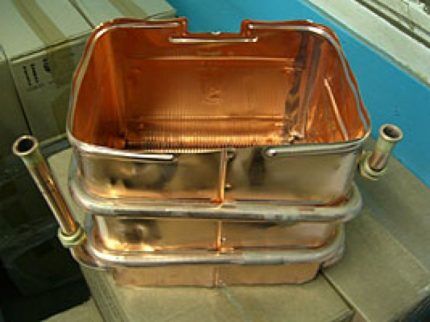
Universal remedies include citric acid, vinegar, Medesk-Plus, Trilon B.They are used for washing heat exchangers made of non-ferrous metals and stainless steel.
Trilon B is the disodium salt of ethylenediaminetetraacetic acid. It appears as a white crystalline powder. When Trilon B interacts with alkaline earth salts (scale), calcium and magnesium ions are replaced by sodium ions. As a result, sodium salts are formed, which are highly soluble in water.
Products are produced that have a complex composite composition. They simultaneously contain components that clean scale and prevent its formation.
Composite KKF differs from other chemicals in its principle of action. It is not a solvent like acids, but in its presence self-cleaning of carbonate deposits (scale) occurs.
Under normal conditions, calcium carbonate crystals form as mineral deposits. This is scale. In the presence of CCF, instead of mineral plaque, another modification of calcium carbonate is formed - aragonite.
Acicular crystals of aragonite destroy calcium deposits as they grow. In contrast, aragonite has weak adhesion to the surface of the heat exchanger and is therefore easily removed by washing with ordinary water.
The active ingredients of CCP already at the initial stage prevent the formation of calcite crystals. As a result, scale formation is significantly slowed down or completely suppressed. This process is called inhibition (translated from Latin: “delay”).
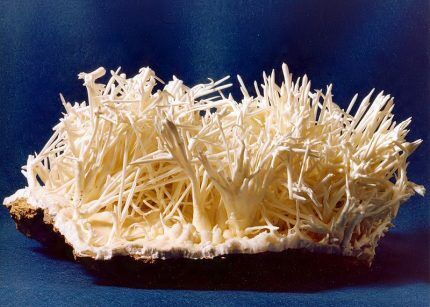
KKF inhibits not only scale, but also corrosion due to the formation of a protective film on the metal surface. When purchasing anti-scale products, do not forget to check whether they have Rospotrebnadzor certificates.
Design features of heat exchangers
To properly flush the heat exchanger, you need to know its design. You will find all the information about your boiler in the instruction manual.
Just in case, let us remind you that to organize autonomous heating and hot water supply in apartments and private houses, gas boilers and water heating columns with the following types of heat exchangers:
- shell-and-tube;
- coaxial;
- lamellar.
In the widely used shell-and-tube heat exchangers, water circulates through a pipe that coils around the side walls of the shell in the form of a coil. This type of unit is soldered or welded, that is, non-separable.
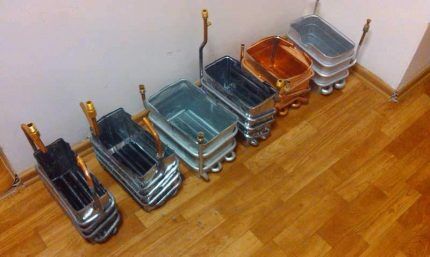
Plate-type heat exchangers are less common. Their main structural part is a metal package in which several plates are assembled.
For example, heat exchangers of Italian boilers Westen Zilmet And Baxi include from 10 to 16 plates. They give up their heat to the water moving between them through channels. Such a device must be disassembled before cleaning.

The main element of a coaxial (bithermic) heat exchanger is two coaxial pipes. In its simplest form, it looks like a spiral with tightly fitting turns.
Double-circuit boilers are characterized by the presence of 2-3 heat exchangers. For example, the NEVALUX-8023 boiler is equipped with three heat exchangers, one of which is coaxial, but not of the spiral type, but with links connected in series.
How to descale a plate heat exchanger
Turn off the boiler, turn off the gas and water supplies, drain the water from the heat exchanger and wait until it cools down. Disconnect the pipelines, unscrew the tie rods, move the pressure plate under which the plates are located.
Carefully separate them from each other. Remove each plate separately to avoid injury from sharp edges; wear thick protective gloves. When working with acid, change them to rubber ones.
Prepare a container in which you will soak the plates, taking into account that they should be completely immersed in liquid.
Use the cleaner according to the included instructions. Table vinegar is diluted with water in a ratio of 1 to 3. Powdered citric acid is diluted in a ratio of 1 to 10. The water for the solution is preheated to 40°C. The plates are immersed in the solution for 1 hour, after which the remaining deposits are removed with a brush under running water.
After dismantling and cleaning, place the plates in a horizontal position so that they lie on a table or other work surface.

When disassembling the heat exchanger, at the same time inspect the gaskets and sealing elements and, if damaged, replace them with new ones. It is recommended to change all gaskets at once, even if only one of them is worn out. Reassemble all elements in the reverse order of dismantling. Reinstall the heat exchanger.
Flushing the shell and tube heat exchanger
Turn off the boiler, turn off the taps on the inlet pipes to save water in the heating system. Drain the heat exchanger. Disconnect the wires from the thermostat and disconnect the hot water pipes. Unscrew the nuts and screws securing the heat exchanger and remove it.
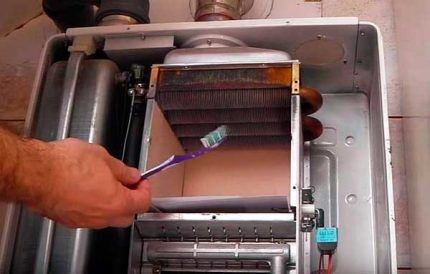
To flush the shell-and-tube heat exchanger from a thick layer of carbonate deposits, it must be removed from the housing. The dismantling process does not require special skills
Visually inspect surfaces. If there is soot on the fins or other areas, soak the heat exchanger in a detergent containing lye. It can also be a solution of ordinary laundry soap.
Unless otherwise stated in the instructions, soaking should last about 15 minutes. Then use a brush to remove the soot. Rinse the heat exchanger under running water with good pressure.
To remove scale, install the heat exchanger in a basin or other container.Pour a solution of citric acid (concentration 10%) into the pipe. After 12-15 hours, rinse the pipes with clean water. Also clean or replace the hot water circuit filters.
Reinstall the heat exchanger. After cleaning, it is also advisable to replace all gaskets. If the gaskets are rubber, use silicone to lubricate them.
Next, the heat exchanger must be checked for leaks. A saturated soap solution is applied to the detachable connections of the gas circuit. If there are leaks, bubbles will form in the soaped areas.

When checking the water circuit in double-circuit gas boiler turn on the heating and hot water supply system separately and inspect each detachable connection. If a leak is detected, tighten the nut or install a new seal.
Features of washing coaxial heat exchangers
Often the pipes of a bithermic heat exchanger are made of different metals. The outer pipe can be steel, and the inner pipe can be copper. Therefore, for flushing you need to use a universal product, which is poured into the pipes, left for the required time and drained. The heat exchanger is washed and returned to its place.
Cleaning and washing of floor-standing boilers
Removal of scale and soot is carried out without dismantling the heat exchanger. A flushing pump (booster) is used. An aqueous solution of citric acid is poured into its container. For 2 liters of warm water, 200 grams of powdered citric acid is required.
Before you clean floor standing gas boiler, turn off the gas and water supply taps, drain the water from the heating and hot water circuits. Next you need to get to the heat exchanger. Remove the door, disconnect the wires connected to the piezoelectric element, remove the thermocouple and nozzle, dismantle the ignition system and burner.
Unscrew the nuts securing the top cover and remove it. You have gained access to the heat exchanger and can clean it of soot with a brush and brush.
Connect the leads of the booster to the heat exchanger pipes, which will pump a citric acid solution into the pipe under pressure. Circulating along the circuit for 4-6 hours, it will dissolve the scale. The rinsing time depends on the level of contamination.
To keep the process under control, use a pH meter. This device will show the change in acid concentration in the solution, which occurs as a result of the ongoing chemical reaction of dissolving carbonate deposits.
If the acid has neutralized and the meter displays a pH value of 1, you may have to repeat the process all over again. A stable pH level between 2 and 4 indicates descaling.
Finally, the pipes are washed with a baking soda solution to neutralize residual traces of the reagent. Next, it remains to install the parts in their places, check the unit for leaks by washing and visually inspecting the detachable connections, or using crimping. If there are no gas or water leaks, the boiler operates as usual.
Conclusions and useful video on the topic
The heat exchanger of a gas boiler can be easily washed at home without the use of professional equipment:
How to descale the secondary heat exchanger of a double-circuit boiler and what is needed for this:
Modern methods and means help to effectively combat scale and prevent its formation. The main thing is not to forget to periodically flush the heat exchanger so that the real characteristics of the gas boiler correspond to the passport indicators throughout its entire service life.
Tell us about how you washed the heat exchanger of your own gas boiler. Share the effective methods of removing mineral plaque that you know. Please leave comments in the form below, ask questions and post photos on the topic of the article.



